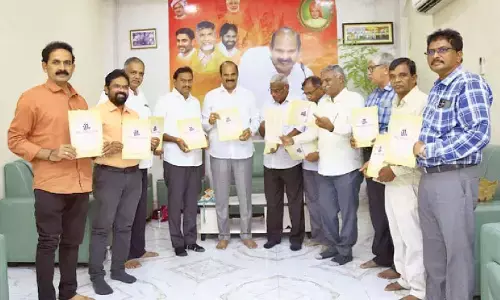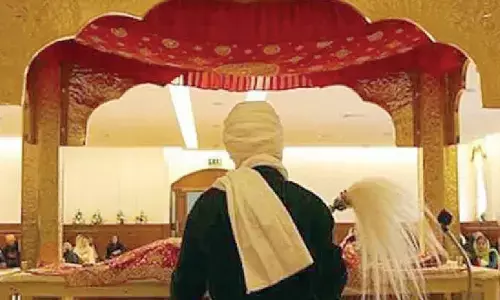Sent signal through water pipe that we're safe, says foreman who was trapped in Silkyara tunnel
Share :

Saba Ahmed, the foreman who was among the 41 people trapped in the Silkyara tunnel in Uttarakhand recalled that they communicated with the people outside by sending signals through the waste water pipe.
Rishikesh: Saba Ahmed, the foreman who was among the 41 people trapped in the Silkyara tunnel in Uttarakhand recalled that they communicated with the people outside by sending signals through the waste water pipe.
"Even when the tunnel collapsed and 41 of us were left trapped inside it, our first priority was to send a message to the people outside that we were safe. We used the waste water pipes to give the message to people outside the tunnel that we were safe," said Ahmed, the foreman of Navayuga company, who along with others were trapped for 17 days.
Speaking to IANS, Ahmed, who hails from Bihar's Bhojpur district, said: "After a part of the tunnel collapsed, the signal bars of our cell phones also disappeared and it was difficult for us to communicate with the people outside. As there was no mobile phone charger, we switched off our phones to save some charge on the battery."
Recalling the events that unfolded on November 12 morning, Ahmed said: "I was assigned work at a place which was around 2.5 km from the spot where the tunnel collapsed. I was present there since November 11 night. In the morning, we planned to complete some concrete-related work at 5 a.m. Then I got a call from one of the electricians that a part of the tunnel had collapsed. I could not believe it and asked the driver to reach the spot immediately. To my surprise, throughout the route, everything looked good. But when I reached the collapse site, I was shocked to see what had just happened.
"My mobile phone and my walkie talkie were not working and it was not possible to reach out to anyone for help. There are two pipes in the tunnel, one is for inlet for fresh water and another is to send out the waste water. We decided to send a signal to the people outside that we are safe, we ran the pump three to four times, which was like sending a signal or some message.
"The people outside understood and then we opened the waste water pipe from inside and they opened the inlet pipe from outside and within 10 to 12 hours, we started getting oxygen inside the tunnel," he said.
He also narrated a story, which he had heard earlier, about how a tunnel collapsed in Himachal Pradesh, and the workers were rescued after a long gap of 38 days.
"This kept all the workers trapped inside motivated as the food and water was being supplied to us initially and then through another six inch pipe all other items were sent to them," Ahmed, who has been working for the last 14 years, said.
Recounting how they managed their inside the tunnel when they had nothing to contact their families in the first 5-6 days, he said: "We all had switched off our phones to save the battery. And to make any call, one among us used to switch on the phone to communicate. The charger and other devices came to us after five to six days and then we all started playing games and watching movies."
Asked if he will return to work, Ahmed said that there was no fear, "and what I have started here will be completed".
"For now I will go home for 10 days. Will come back again and complete the work. It was just a natural thing, which happened but the company, the state government and the Central government, the NDRF and the SDRF... everyone worked together to bring us out safely," he said.
When asked what he felt after the rat-miners entered the tunnel after digging out, he said: "All the workers took them (rat miners) on their shoulders in happiness and raised the slogan of 'Bharat Mata ki Jai'. And when we were brought out, I felt a sigh of relief as I was able to breathe the fresh air."
He said that he will fly to Delhi on Thursday night, and go to Patna from Delhi on Friday morning. From there, he will be taken to his village by the state government officials, who had already arrived in Rishikesh for him and arranged for his travel.
On November 12, an under-construction tunnel collapsed in Uttarakhand's Uttarkashi leaving 41 workers trapped. Ahmed also said that he interacted with Prime Minister Narendra Modi and underlined how he and Gabbar Singh Negi led from the front to keep all their workers motivated.















